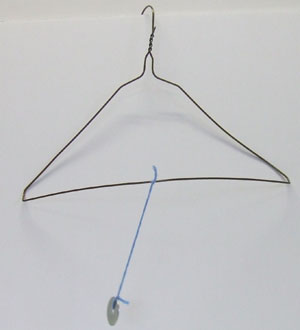Moonlight in the Arctic Ocean
Hello,
Our Kids Science Newsletter this month includes a question of the month, current science events, science trivia and a simple science experiment. This month’s current events include information about moonlight in the Arctic Ocean, volcanoes in Indonesia and producing better cows by petting them when they are young.
Question of the Month
What is a nebula?
(answer follows the simple science experiment)
Science Current Events
- Indonesian Volcanoes
- Indonesia is an archipelago of islands that have formed in a subduction zone. The islands contain 127 active volcanoes. The country is home to more active volcanoes than any other country on Earth. Mount Egon is the latest volcano that is threatening to erupt in the near future. Rising magma beneath the volcano has forced the evacuation of residents living within two miles of the base of the volcano. Six volcanoes in the nation are presently going to erupt or will probably erupt in the near future.
- Moonlight in the Arctic Ocean
- Researchers have discovered that microscopic animals use moonlight to move around during the long winter months around the North Pole. Zooplankton are microscopic animals that live in the ocean and feed during the night to keep from being eaten. The animals move toward the ocean's surface during the winter to feed using moonlight. Every 29.5 days during the dark winter they move much deeper in
the ocean to avoid being eaten when the full moon rises. This movement occurs even in water that are covered with sea ice and snow.
- Petting Baby Calves
- New research in Australia has shown that three minutes a day of petting calves by stroking them under their necks after their birth benefits the calves for the rest of their lives. Baby calves are often taken away from their mothers on the day they are born and kept in single pens until they are older. Calves that have been petted when they are very young have better relationships with humans when they are older. Milk cows also gain more weight and produce more milk later in their life when petted while they are babies.
Science Trivia
- Earthquakes are a shaking of the ground. Small earthquakes may be set off by landslides, volcanoes or even heavy traffic. Bigger earthquakes are set off by the grinding together of the tectonic plates building up energy in the rocks until they break apart.
- Some rats can survive without water longer than camels.
- There are 21,000 species of fish. Fish are cold-blooded vertebrates that breathe through gills. Gills are rows of feathery brushes inside each side of the fish's head. To get oxygen fish gulp water into their mouths and draw it over their gills. As water passes into the gills it is cleaned by sieve-like structures and the oxygen passes into the fish's blood.
- The sea between Denmark and Sweden can freeze over and the ice can be strong enough for cars to cross it. In 1716 the King of Sweden led his army over the ice to invade Denmark.
Simple Science Activity
Pendulum
Introduction
The first pendulum clock was invented in 1656 by a Dutch scientist. He built his clock based on experiments by Galileo in 1583. Pendulum clocks remained the world standard for accurate timekeeping for 270 years, until the invention of the quartz clock in 1927. In this experiment you will use a string and metal washers for your pendulum.

Materials
- String
- Measuring tape
- Scissors
- Metal washers
- Clothes hanger (wire or plastic)
- Watch or other time piece that measures seconds
Directions
- Tie the string to a metal washer so that it hangs down 48 inches from the clothes hanger.
- Have someone hold the clothes hanger or place it on a hook so it does not move when the pendulum is swinging.
- Pull the string back 10 inches and then let go.
- Count the number of swings in 60 seconds.
- Use different numbers of washers or other weights at the end of your string.
- Use different lengths of string when testing your pendulum.
- Pull the string different distances from the center of gravity to see what happens.
- After testing the pendulum in different ways see if you can get the pendulum to make 30 swings in thirty seconds.
Science behind the experiment
It is believed that
Galileo first noticed that chandeliers in the Pisa cathedral had identical periods. Galileo was a medical student at the time. He used swinging pendulums to measure his patients' pulse rates. The simple gravity pendulum in this experiment loses speed because of friction and air drag.
Answer to the question of the month
What is a nebula?
A nebula is a gigantic cloud in space. It is made of gas and dust. Nebula can be bright or dark depending on the type of particles it contains. Some particles absorb light while others reflect light. Some nebulae are bright because they contain hydrogen and helium gases which glow. Scientists believe that nebula are the birth place of stars.
Links to our back issues of Kids Science Newsletter
Our Other Websites
Ring of Fire Science
The-Science-Site
Kids-Earth-Science
Please share this newsletter with a friend by forwarding it to them. If you know of a group who might enjoy the newsletter please let them know about it also.
Comments? Ideas? Feedback? I'd love to hear from you. Just reply to this Just For Kids Science Newsletter and tell me what you think!
Have a nice day,
Myrna Martin

